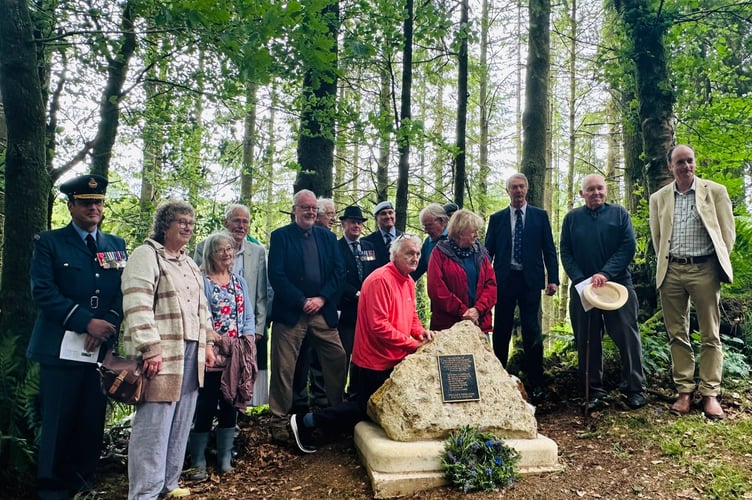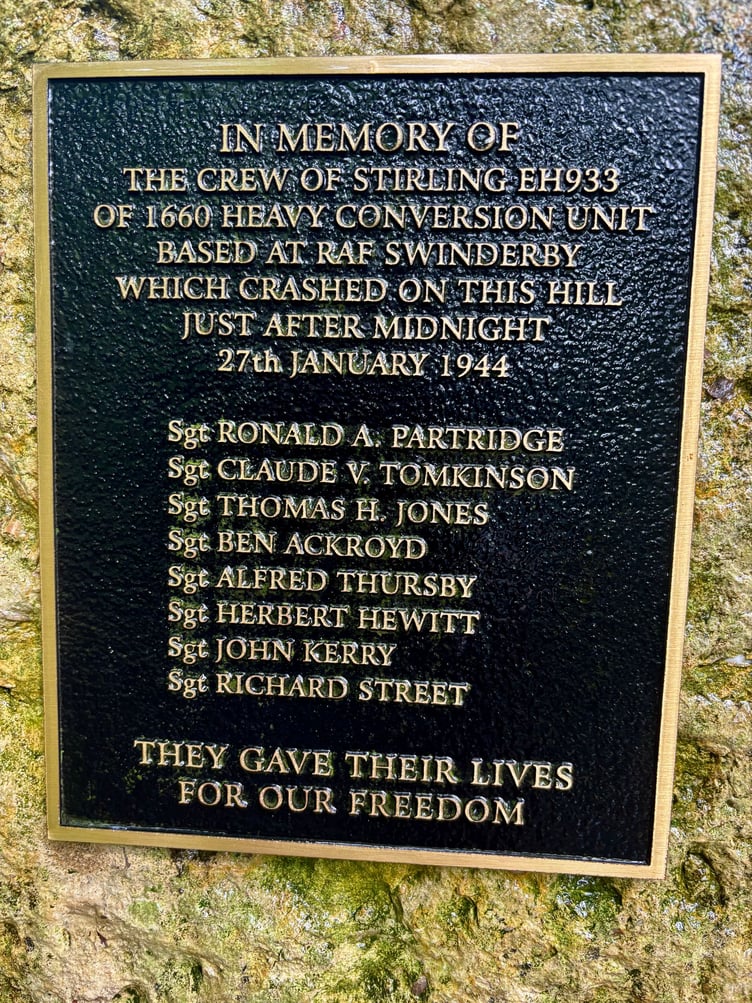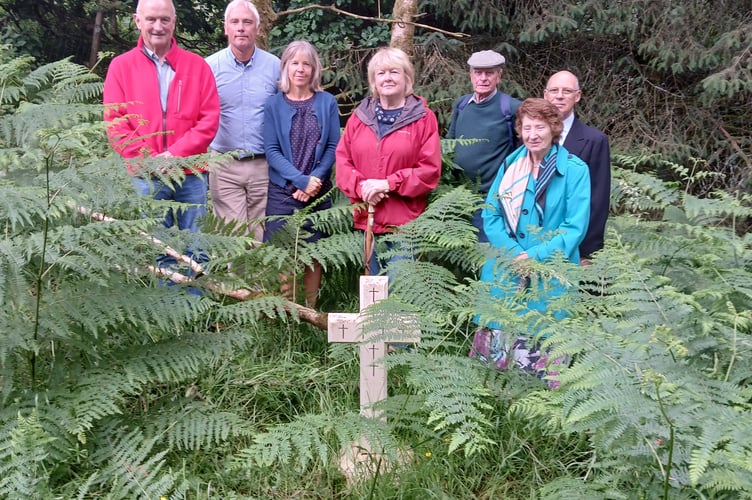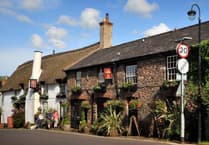EIGHT bomber crew members, who were killed in a crash near Bridgetown in 1944, have been honoured in a memorial more than 80 years on.
On a Monday, June 23, more than fifty people gathered by a memorial on an Exmoor hillside, to honour and remember the eight crew - Ronald Partridge, Claude Tomkinson, Thomas Jones, Ben Ackroyd, Alfred Thursby, Herbert Hewitt, John Kerry, and Richard Street - who died when a Stirling bomber crashed on a training flight in 1944.
Among the attendees were four descendants of the crew, who had travelled from around the world to attend the service. The site had been prepared, and the memorial cleaned by a former Army Air Corps pilot. The local rector, David Weir, led the service, the Last Post was played, and the eight men were remembered in “proper style”.
Speaking at the dedication ceremony, Air Commodore Patrick Shea-Simonds said: “Though over eighty years have passed, the memory of these men and their sacrifice endures. So, it is particularly good to see friends and family represented here alongside all those who have worked so hard to bring this memorial to life.
“By January 1944, the RAF had been fighting for over four years. By the end of the war over 55,000 airmen had been killed. This death rate of 44 per cent made it one of the most dangerous roles in all the Allied Services.

“To keep up with the demand for trained Air Crew new pilots and support crew were constantly being trained, often under immense pressure and in hazardous conditions. Accidents during this training were tragically common; indeed, over 8,000 personnel were killed in accidents alone.”
The Short Stirling Bomber was the RAF’s first four-engine heavy bomber. It entered service in early 1941.
Commodore Shea-Simonds continued: “Though it was gradually replaced in frontline bombing roles by 1943, the Stirling continued to serve with distinction, taking on roles with the Pathfinders, in mine laying, glider towing, special operations, and electronic warfare. Out of the 2,371 aircraft built, 582 were lost on operations and 119 written off in accidents.
“On January 26, the crew set off on a night-time low-level cross-country training mission. The weather was poor - heavy cloud, gusty winds, and ice made conditions extremely dangerous.
“Just after midnight, the aircraft entered a steep, high-speed dive and broke up in the air. Investigators concluded the crew likely lost control in thick cloud, and the airframe suffered catastrophic structural failure. The wreckage was found here near Bridgetown, at 0002 hours, and everyone on board was dead.
“Each of these men had families, loved ones, and bright futures. Some were married, some barely out of their teens. All of them answered the call of service in the fight against Nazi Germany and the wider threat of fascism.
“Though their mission that night was for training, their sacrifice is no less worthy of remembrance than those lost in combat. Their loss was not in vain. Every training flight, every mission, every life contributed to eventual victory in 1945.”
Many contemporary documents pointed to the crash having occurred at Exton in South Devon. It took much careful work by one of the descendants to prove that the accident happened in fact near a different Exton, the one on Exmoor in Somerset.
That research is now part of the MOD Air Historical Branch’s file pertaining to the incident.
Research began in 2015 when Bob Brown, the great nephew of the mid-upper Air Gunner, while researching his family tree, questioned whether accounts of the death of his great-Uncle might have the wrong location.

During a holiday in Somerset, he visited the nearby Exton and, having found the address of the Parish Council Clerk on a notice board, Mr Brown sent a letter inquiring after any local knowledge or memory of the 1944 crash.
Among the members of the Exton Parish Council that first received the letter in 2015 were by chance the owner of the land, the Chairman of the local Royal British Legion branch, and a man who remembered playing amongst the wreckage.
Another lady, still alive, remembered how when she was a young girl her father had helped to carry the bodies down the hill the next day, with other members of the Bridgetown Home Guard.
It was decided that a memorial should be erected on the site of the crash, so with the help of a local organising group, the War Graves Commission, Exmoor National Park, and a stonemason, a cross and boulder with a bronze plaque were put in place in 2021.
The memorial cross was placed beside the deformed tree on the hillside where the men died, with the boulder and plaque sited 100m below, 400m uphill from the main A396 road.





Comments
This article has no comments yet. Be the first to leave a comment.